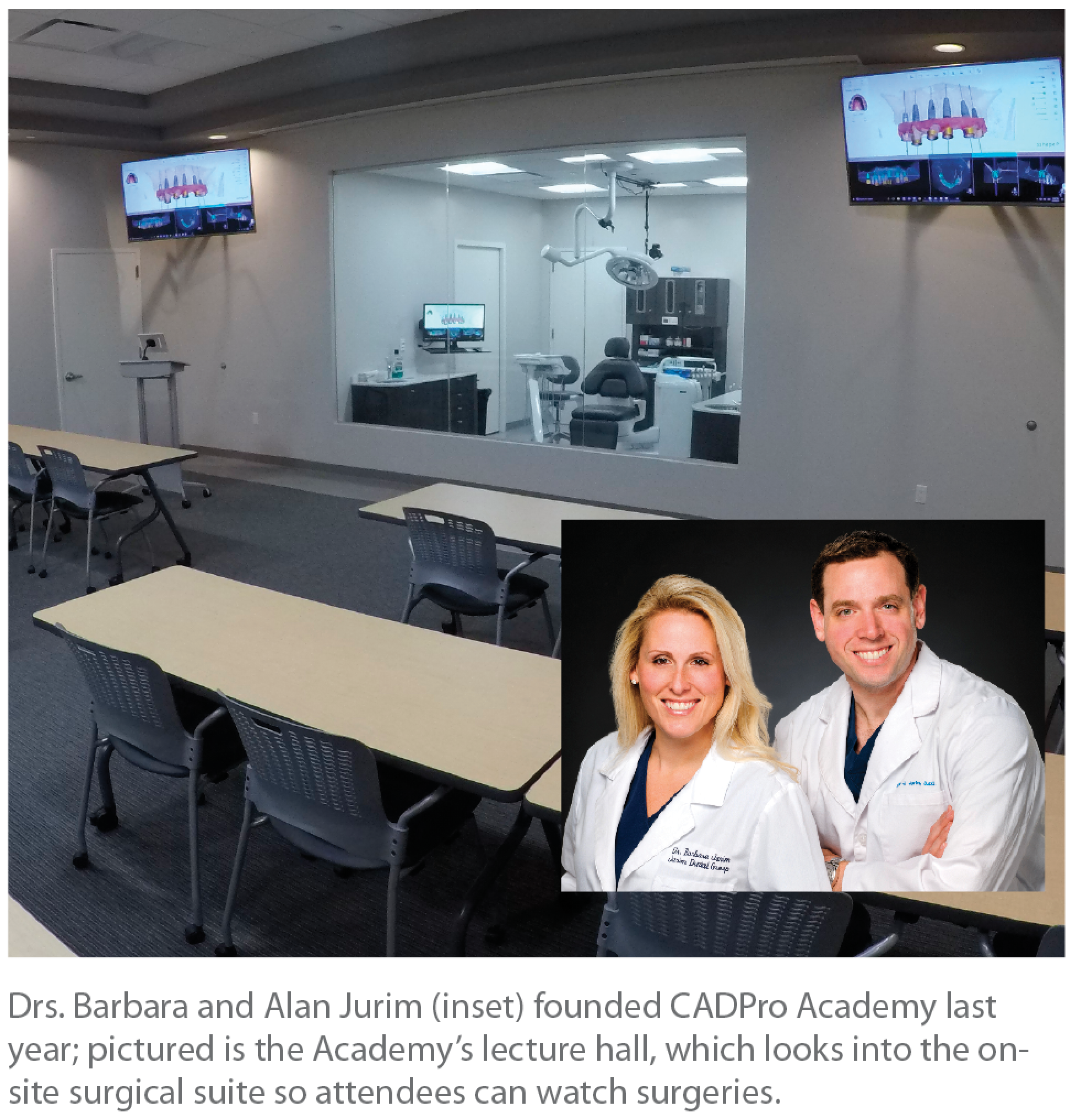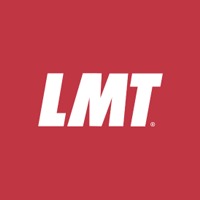Dental Labs
5 Dental Market Trends Labs are Facing Head On
LMT Communications, Inc.
The landscape of the dental industry is ever-changing: demographic shifts, business model transitions and technological evolutions present new opportunities and challenges for dentists and laboratories alike. Proactive laboratories are making a point to stay on top of these trends, setting themselves up to be invaluable resources to their clients as well as leaders in the dental community.
TREND: Growing Population of New Dentists
In the last 25 years, there’s been a 15% increase in the number of dental schools and 28% increase in dental school enrollment. At the same time, many schools have decreased the amount of dental technology training in the curriculum.
To support soon-to-be dental graduates, NDX Lord’s Dental Studio works with Marquette University Dental School, where it’s part of the curriculum for senior dental students to spend a day at the laboratory; Lord’s provides lunch and bus transportation to and from the school. One of Lord’s clients—a Marquette alumnus and dentist who owns multiple practices in Wisconsin—gives a presentation on how to work with a laboratory, emphasizing how to grow and strengthen the partnership so it’s a win-win for both the practice and the lab.
Students then get a comprehensive tour of the lab where they can watch technicians work and experience some of the technology (the laser welder is a favorite). “They love being able to talk with the technicians while they’re working and are amazed at how advanced materials and technologies are being applied in today’s dental laboratory,” says Mike Zavada, General Manager of the DePere, WI, laboratory. “This day gives them a whole different view on how a lab works; for many, it’s their first experience inside a laboratory.”
Another approach aimed at helping new practicing dentists is the Young Dentist Program, a mentoring and education program created by Utah Valley Dental Lab and well-known educator Dr. David Hornbrook. The program—open to dentists who have been out of school no more than five years—consists of three educational weekends over a six- to eight-month period.
During the first weekend, dentist-attendees have the option to present a particularly challenging case, each of which is discussed and treatment planned by the group. Ultimately, they vote, selecting one of those cases to be done by Dr. Hornbrook while they observe during two future weekends (one for prepping and one for seating); the case is chosen not only based on the educational potential but also on patient need.
This year, the program has 40 dentist-participants. They pay only their travel expenses; the program itself is free and Dr. Hornbrook and the lab donate their work and time.
“The program gives these young dentists an opportunity to work side by side with Dr. Hornbrook and essentially have him as their mentor,” says Jim Thacker, Vice President/Business Manager of the Lindon, UT laboratory. “It also exposes them to the level of work we do and helps them see the laboratory as a partner and not just a vendor; once we’ve established that relationship, we’re the ones they call when they encounter a difficult case.”
TREND: More Female Dentists in Practice
According to the ADA, in 2017-18, women made up almost 50% of the dentist population, up from 36% just two decades ago. And it’s estimated that female dentists will make up an even larger proportion of the dentist workforce in the future.
To support leadership among women and tap into the growing appeal of women-only entrepreneurial groups, Glidewell Dental has launched Guiding Leaders, a new year-long educational program exclusively for female dentists.
“The program is designed to teach women about the business of dentistry. What I’m seeing in the industry is that male dentists are getting this type of training through networking and mentorships and the women are not,” says Stephenie Goddard, Executive Vice President and the program’s visionary. “Women face some different issues than men. For instance, it’s still more typical for a woman to put her career on hold or modify it if/when she has children. Our goal is to build a group of women who support one another and can give advice from real experiences that other women can relate to.”
Presented by industry leaders and executive consultants, the courses are held monthly in one of three locations: day-and-a-half programs at the Glidewell International Technology Centers in Newport Beach or Louisville, KY, and two-hour courses held online. Participants are also paired with an executive coach whom they will work with twice a month, both in person and via video chat software such as Skype.
“The biggest question I get is ‘why is Glidewell doing this?’” says Goddard. “The answer is simple: We recognized a need and this is just one way we want to give back to the industry that has made Glidewell what it is today.”
The inaugural program begins in April and includes 12 currently practicing female dentists with five-plus years of clinical experience. For more details, visit guidingleaders.com.
TREND: DSOs on the Rise
According to the ADA Health Policy Institute, 7.4% of all practicing U.S. dentists are affiliated with a DSO and that number more than doubles—to 16.3%— for dentists ages 21-34.
Larger DSOs typically send out an RFP (request for proposal). Labs invited to participate present a complete proposal for laboratory restorative work based on the particular RFP requirements. The DSO then awards contracts to the lab(s), typically based on pricing, turnaround times and lab qualifications. Some DSO dentists can continue to work with any lab they choose, however, since the contracted labs have lower prices, dentists have financial incentives to use them.
When Knight Dental Group, Oldsmar, FL, had the opportunity to bid on a large DSO contract seven years ago, its digital capabilities were already well-honed and it was able to offer an enticing package to the group: volume capability, consistent quality and attractive pricing.
It landed the one-year contract and, through word of mouth, the lab’s DSO business took off. Today Knight works with five DSOs—representing almost 1,500 doctors—and this segment of the lab’s business comprises a significant proportion of its annual revenues.
The volume of incoming DSO work allows the lab to offer reduced contracted prices over its typical fees and, to further maximize its margins, the lab only bids on offering certain types of restorations. “We focus mostly on fixed restorative work, like zirconia and e.max because these products allow us to utilize digital technologies,” says Barbara Warner Wojdan, CDT, AAACD, President of Knight. “On the other hand, we usually don’t bid on removables since digital capabilities are still limited. We find that many smaller DSOs prefer to work with smaller, local removable labs that can offer very personalized local service and multiple in-office visits.”
Although there are no specified volume guarantees from the DSOs Knight contracts with, the lab applies very specific metrics and conducts its due diligence, such as checking the DSO’s recognized business ratings and asking for information such as how many types of crowns it places each year. “At the end of the day,” says Wojdan, “fixed pricing, consistency and on-time service are key factors for gaining clients in this arena.”
While the sheer volume of work has had a huge impact on the lab’s business, it’s also created some challenges. For instance, since many DSO dentists have monthly patient quotas to fill, the lab used to get deluged with cases at the end of each month. To fix this issue, it instituted a monthly cut-off date by which clients have to submit cases in order to have them completed by the month’s end. It also had to hire more technicians; purchase additional equipment such as mills and printers; and implement 24-hour shifts so it could better handle the increased caseload.
Another necessary change: since every DSO client new to Knight gets teamed up with a Client Technical Service Representative (CTS), the lab had to boost the number of people in the department. “The increase in staffing was essential to manage the routine communications from the increase of DSO clients who are new dentists,” says Wojdan.
The CTS operator handles all communication with the dentist, like reviewing incoming and outgoing cases, identifying where more training is needed and assisting with technical improvements—such as taking better impressions or tooth preparation requirements. “While many of the DSOs offer their own training programs, we’ve definitely had to take on more of an education-provider role to help these younger dentists,” says Wojdan.
There are also some distinct benefits to working with a DSO—like the fact that Knight’s DSO clients tend to be ahead of the curve when it comes to technology. “These accounts are moving to digital dentistry faster than many of our traditional ones,” says Wojdan. “In fact, one of our largest DSO clients just distributed over 800 intraoral scanners to its doctors. As a result, the number of digital impressions we receive has gone from about 85 files a day to over 250 per day, which has gone a long way in streamlining our production and further reducing our costs.”
TREND: Proliferation of Intraoral Scanning
The percentage of dentists with intraoral scanners has nearly quadrupled in the last six years, from 17% to 61%, according to a comparison of LMT’s 2012 and 2018 Dentist Surveys; another 17% plan to buy a scanner in the next year. However, lab owners say that about a quarter of the digital impressions they receive are inadequate and many are pitching in to minimize dentists’ learning curve and help ease integration into their practices.
Lonni Thompson, CDT, Owner, Image Gallery, Dublin, OH, has determined it takes a doctor an average of 10 cases to get digital impressions down. “They’re going to have questions and they don’t want to look bad in front of their patients,” she says.
To be a resource for her clients, Thompson builds time into her schedule to go chairside to assist them, especially with large or complicated cases. For example, she was recently on site to ensure the dentist followed the proper scan sequence for a full-mouth rehabilitation; when she was also chairside for the seating appointment, there were minimal adjustments required. “It’s truly amazing technology when it’s used correctly,” she says.
Kevin Westrich Jr., Lab Manager, FEDL/D3 Solutions, Maryland Heights, MO, agrees that it’s key for laboratory owners and managers to help with their clients’ transition to intraoral scanning. In fact, five years ago, he became so well-versed in intraoral scanning techniques that he was invited by a manufacturer to lecture on the topic and now offers five to six presentations a year to his dentist-clients and other groups about digital workflows.
“I’ve worked with doctors who get really frustrated with the technology early on and the scanner ends up sitting in a dark corner of the practice, collecting dust,” he says. “The best thing you can do as a lab owner is help them through the growing pains.” (Click here for more advice from Westrich and Thompson.)
TREND: Expanding Digital Workflows
Less than a decade ago, only half of laboratories said clients were interested in trying new technologies and even fewer were prescribing milled restorations. However, that’s transitioning quickly and more and more dentists are embracing the digital revolution, lauding the streamlined workflows and more accurate results.
To help the dental team get the most out of digital technology, brother-and-sister dentists Drs. Alan and Barbara Jurim launched CADPro Academy and its web component, cadproacademy.com, last year.
The concept originated in the Jurims’ in-house lab, Jurim Dental Studio, Woodbury, NY, founded by their late father, Adrian Jurim, MDT. The lab was receiving a lot of phone calls from dentist-clients asking for technical advice on intraoral scanning. “When we looked to see what resources were out there for dentists, we saw a lot of misinformation, which gave us the idea to offer the right information ourselves,” says Barbara. “And having an in-house lab means we understand both the clinical and laboratory side of things, so we can offer a range of education for the whole team.”
Open to technicians, dentists and auxiliary staff, CADPro’s courses take place at its 25,000-square-foot facility, conveniently attached to the Jurims’ dental clinic and laboratory. It offers lectures and hands-on courses on digital technology and workflow, many of which are related to using 3Shape’s TRIOS®scanners and software.
It also hosts live patient courses such as a two-day guided implant surgery program. “We cover the entire process, from doing intraoral and cone beam scans on a patient, designing a surgical guide and printing it overnight in the lab, and then using that guide to perform surgery the next day,” says Sunil Abraham, CTO, the technician in charge of the digital department at Jurim Dental Studio.
CADPro Academy offers three membership levels with varying benefits, including training videos, webinars, blogs, literature reviews and a user discussion forum on its website. To learn more, visit cadproacademy.com/become-member-now.
About The Author
LMT Communications, Inc.
www.lmtmag.com
LMT Communications delivers the business strategies, information, dental laboratory news and education that dental laboratory decision-makers need to succeed. In Print. In Person. Online.



